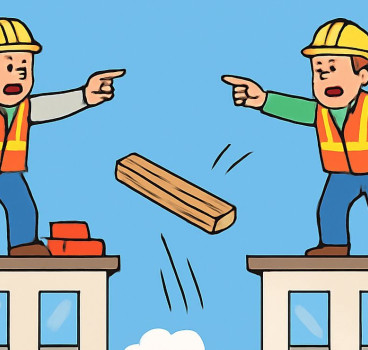AI and the future of architecture
For centuries, architects have been the visionaries behind our built environment, from the timeless elegance of Frank Lloyd Wright's Prairie style to the gravity-defying curves of Zaha Hadid's architectural marvels. But the 21st century is ushering in a new era of design, one where artificial intelligence (AI) is poised to become a game-changer, transforming the way we design and construct buildings, writes John Ridgeway.
While the concept of AI in architecture may sound like science fiction, it's rapidly transitioning into reality. Although it is highly unlikely to replace architects entirely, it has the potential to become a powerful tool, augmenting human creativity and streamlining the design process.
One of the most exciting possibilities of AI in architecture is its ability to generate design options. AI algorithms can be trained on vast datasets of architectural plans, styles and building codes. By analysing this data, it can create a multitude of initial design concepts, catering to specific parameters such as site constraints, functional needs and desired aesthetics.
This does not mean that architects will become mere button-pushers. They still play a crucial role in guiding the AI, setting design goals and filtering the generated options to find the most promising ones. However, AI can significantly reduce the time and effort required for initial brainstorming and exploration, allowing architects to focus on refining and developing the most promising ideas.
It can also generate design options that maximise natural light utilisation, optimise energy efficiency and seamlessly integrate with the surrounding structures. This can spark new ideas and lead to more innovative and sustainable designs.
Optimising building performance
In time, AI will likely become a valuable tool for optimising building performance across various metrics, with algorithms that can analyse factors like energy consumption, thermal comfort and structural integrity, suggesting design modifications that enhance the overall performance of a building.
For example, AI can analyse climate data and suggest building envelope designs that minimise heat loss in cold climates or optimise ventilation in hot climates. Similarly, it can help to design buildings that utilise natural light more effectively, reducing dependence on artificial lighting.
This focus on performance optimisation aligns perfectly with the growing demand for sustainable architecture. By leveraging AI, architects can design buildings that have a minimal environmental impact while offering superior comfort and functionality for occupants.
Automating repetitive tasks
The architectural design process often involves repetitive tasks like generating drawings, creating documentation, and conducting basic code checks. These tasks, while necessary, can be time-consuming and tedious. AI can automate many of these repetitive tasks, freeing up architects to focus on the more creative and strategic aspects of design.
For instance, AI can generate construction documents such as floor plans and sections based on a 3D model created by the architect. This not only saves time but also minimises the risk of errors in these documents. Similarly, it can be used to automate basic code checks, ensuring that the design complies with relevant building regulations.
The discussion on AI in architecture extends beyond the core functionalities already mentioned – there are many more advanced and intriguing applications currently being explored.
These include generative design with deep learning, a subfield of AI, which allows algorithms to learn from complex datasets and identify patterns. This has the potential to revolutionise design generation by enabling AI to create not just variations on existing styles, but entirely new design concepts based on specific functional and aesthetic goals. Consider, for example, of AI generating a building design that optimises not just energy efficiency but also incorporates elements that promote occupant well-being and social interaction.
There is also the potential for AI-powered parametric design, which involves creating models where various parameters can be adjusted to generate different design iterations. AI can be integrated into this process, allowing for real-time optimisation of parameters based on performance criteria. This can lead to highly customised and efficient designs that adapt seamlessly to changing requirements.
Furthermore, AI can be a valuable tool for the restoration and preservation of historic buildings. By analysing 3D scans and historical data, it can help identify structural weaknesses, suggest appropriate restoration techniques and even recreate missing architectural elements. This can ensure the preservation of our architectural heritage for future generations.
AI-driven virtual reality (VR) experiences are already common and are becoming increasingly sophisticated, allowing architects to create immersive experiences of their designs. AI can be integrated into VR experiences to generate realistic simulations of lighting, acoustics and even occupant behaviour within a proposed building. This can provide valuable insights for architects and stakeholders before construction begins.
Furthermore, the potential applications of AI extend beyond the design phase into construction management. AI algorithms can analyse project data to identify potential delays, optimise resource allocation and predict project costs with greater accuracy. This can streamline construction workflows and improve project efficiency.
Collaboration and the human touch
While AI offers a plethora of benefits, it's important to remember that human expertise remains irreplaceable in the architectural design process. AI should be seen as a collaborative tool, not a replacement for architects. The best designs will likely emerge from a fusion of human creativity and intuition with the analytical power of AI.
However, as with any powerful technology, AI in architecture raises ethical considerations. Architects need to be mindful of potential biases in AI algorithms and ensure that the technology is used responsibly and ethically. Furthermore, it's crucial to maintain transparency throughout the design process, ensuring that stakeholders understand how AI is being used and what role human architects play in shaping the final design.
The integration of AI into architecture is still in its early stages, but the potential is significant. As AI technology continues to evolve and become more sophisticated, we can expect to see even more innovative applications emerge. The future of architecture will likely be characterised by close collaboration between architects and AI, leading to the creation of buildings that are not only aesthetically pleasing and functional but also sustainable, resilient, and responsive to the needs of a changing world.
So far, the development of AI for architecture is not limited to any one geographical region. In Europe, it is reported thatr practices such as Zaha Hadid Architects (UK) and BIG – Bjarke Ingels Group (Denmark) are exploring AI for design generation and performance optimisation in their projects.
China is investing heavily in AI research and development with several Chinese universities and tech companies developing AI tools specifically tailored for architectural applications. Japanese architects are also known for their innovative use of technology. Firms like SANAA and Kengo Kuma & Associates are exploring AI for designing buildings that seamlessly integrate with natural environments.
This global exchange of knowledge and expertise will accelerate the development of AI in architecture, paving the way for a future where architects around the world can leverage this powerful technology to create truly groundbreaking designs.
Challenges and considerations
However, while the potential benefits of AI in architecture are undeniable, there are challenges that need to be addressed. One key concern is the lack of human intuition and empathy that AI currently possesses. Architecture is not just about technical specifications; it's also about creating spaces that are aesthetically pleasing, culturally relevant and responsive to human needs. These aspects of design may prove difficult for AI to replicate at least in the foreseeable future.
Another challenge is the potential for bias in AI algorithms. AI models trained on existing datasets may inadvertently perpetuate biases present in those datasets. For example, an AI trained on a dataset of historically masculine architectural styles might generate primarily masculine design options.
To mitigate this, architects need to be aware of these potential biases and carefully select training data for their AI tools. Additionally, human oversight remains crucial throughout the design process to ensure that AI-generated options are not only technically sound but also socially and culturally appropriate.
The future of architecture is likely to be a collaborative one, where human creativity and expertise are augmented by the power of AI. Architects will increasingly utilise AI tools for design generation, performance optimisation and the automation of repetitive tasks. This will free them to focus on the higher-level aspects of design, such as conceptual development, user experience, and creating spaces that inspire and uplift the human spirit.
The rise of AI in architecture does not herald the demise of the architect. Instead, it presents an opportunity to enter a new era of design – one that is more efficient, sustainable, and responsive to the needs of a rapidly changing world. By embracing AI as a powerful tool, architects can push the boundaries of creativity and design truly remarkable buildings for generations to come.
Additional Blogs

Construction’s obsession with blame instead of learning
Construction is one of the most technically advanced industries in the built environment, yet culturally it often behaves like one of the least reflective. When things go wrong and they frequently...
Read moreHow risk Is routinely pushed down the supply chain
Risk is an unavoidable part of construction. Every project involves uncertainty around ground conditions, weather, design coordination, procurement, labour and programme. Yet while risk is inherent,...
Read more

What if Building Control went fully digital?
Building control governs structural integrity, fire protection, energy efficiency, accessibility and countless other aspects of design and construction. Historically, this process has been highly...
Read more